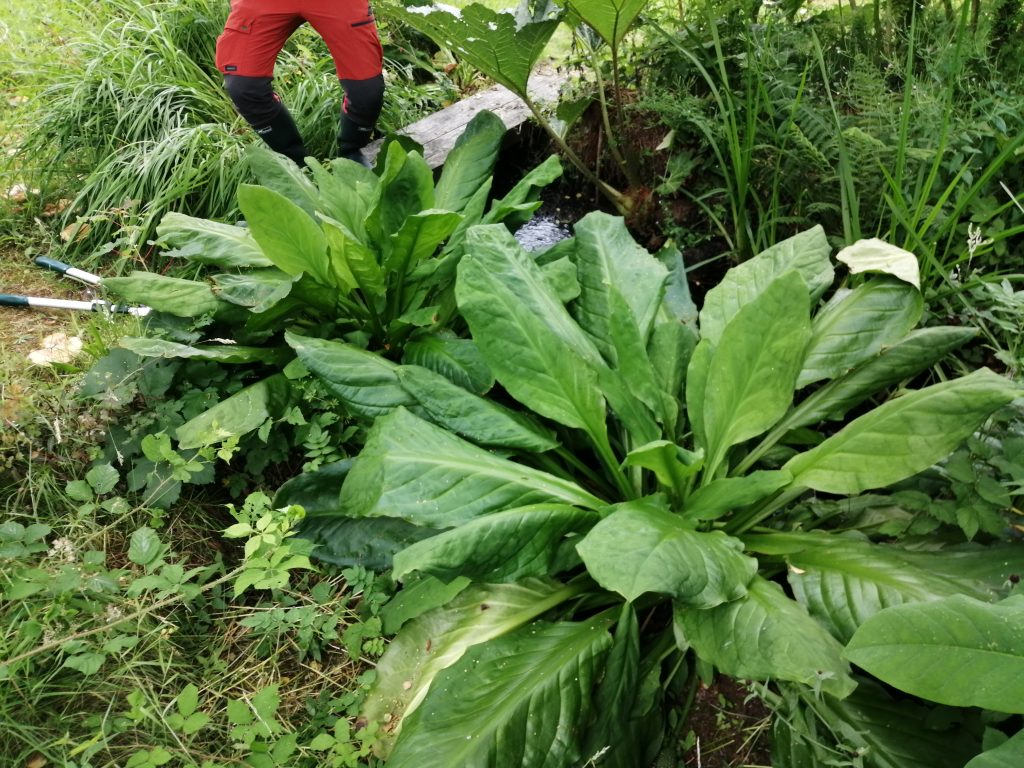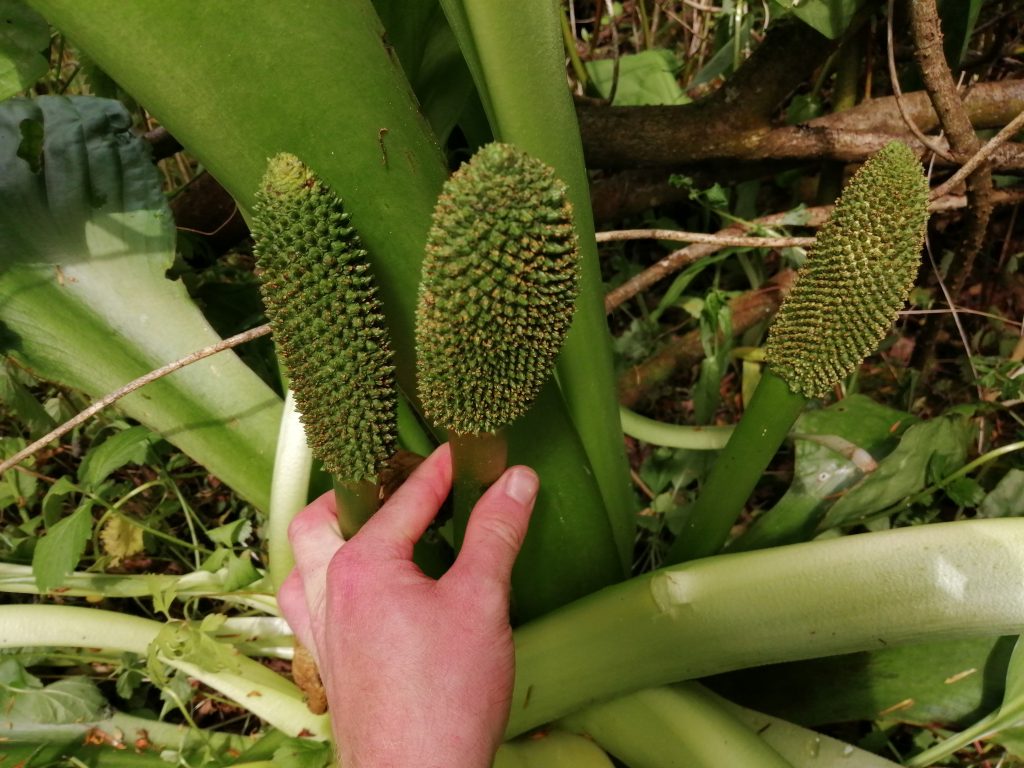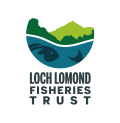Invasive non-native species
The Loch Lomond Fisheries Trust have been tackling Invasive Non-Native Species (INNS), including Japanese knotweed, giant hogweed, American skunk cabbage and Himalayan balsam, particularly, if they’re growing in the riparian zones around our rivers. INNS have been identified as a major threat to biodiversity and are a pressure to vulnerable fish species such as lamprey and Atlantic salmon. At Loch Lomond Fisheries Trust, we believe that eradicating these species from the catchment is vital to improving our river habitats for our native flora and fauna. Work began on the Endrick and Blane catchment in 2019, but due to the success our efforts have now expanded to the Fruin Water, River Leven and the shores of Loch Lomond. This work is supported and funded by Loch Lomond and the Trossachs National Park Authority (LLTNPA), Nature Scot (previously known as Scottish Natural Heritage) and West Dunbartonshire Council.
Giant hogweed
Heracleum mantegazzianum
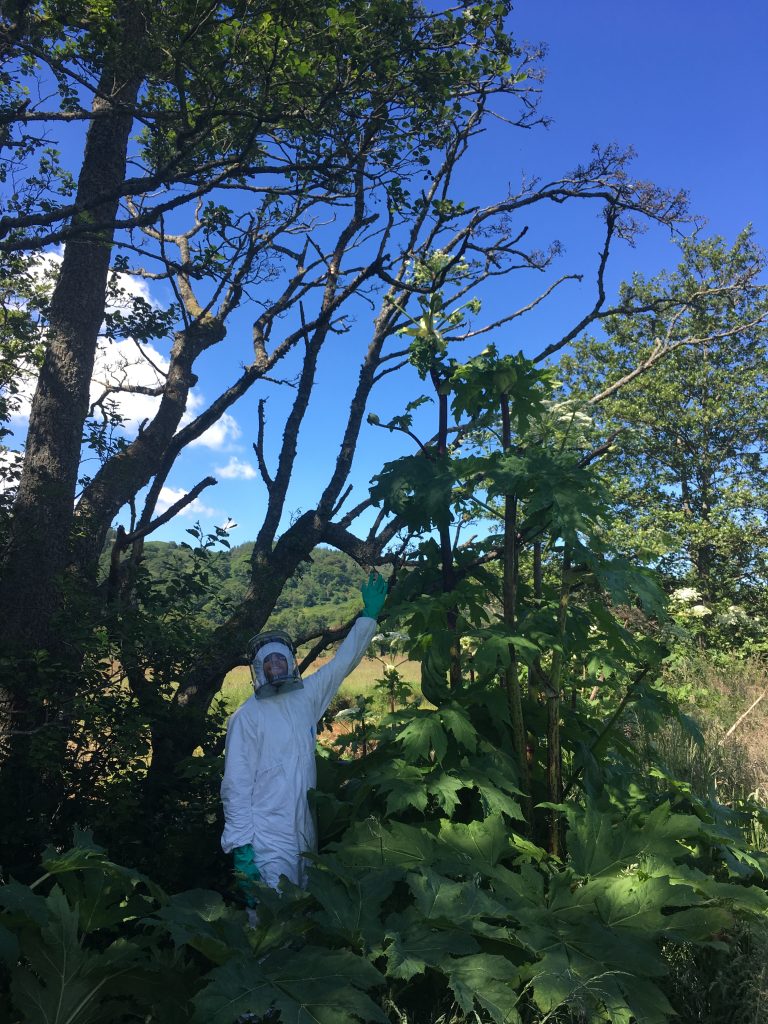
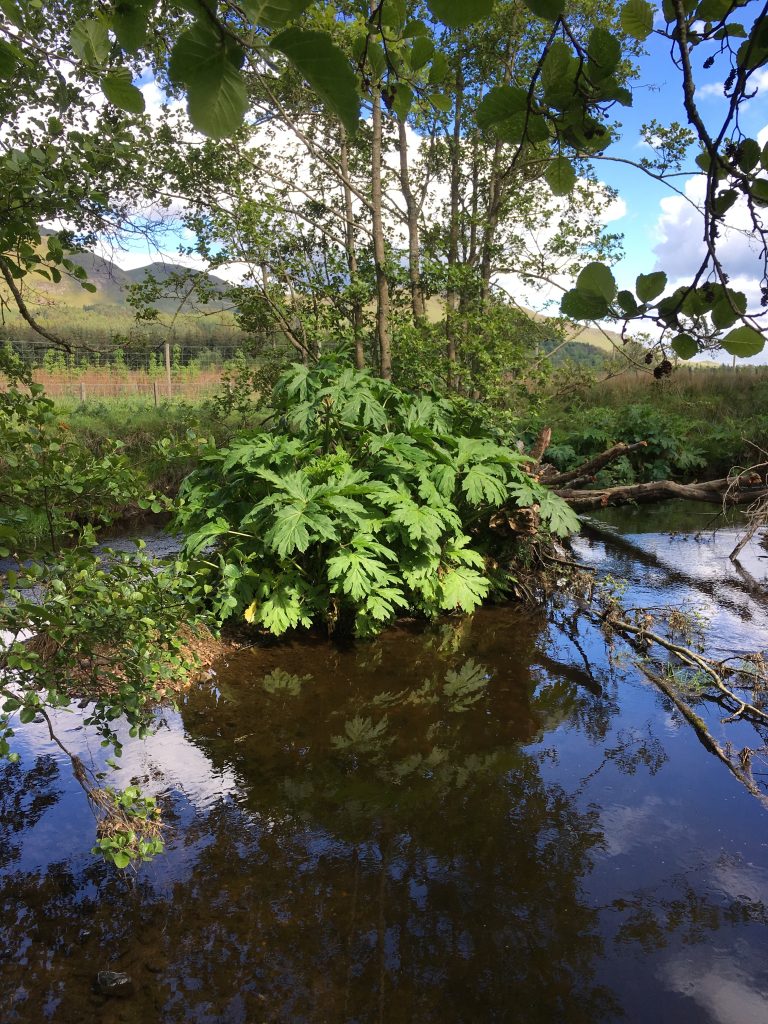

Emerging around April this fast growing, tall and dangerous herbaceous plant can reach heights of 3 meters by the end of June and July – towering over native vegetation. Once the plant has produced a large umbrella shaped white flowerhead, seeds start to develop shortly afterwards. Each plant can produce up to 80,000 seeds, meaning that if an area is left untreated it will quickly take over and dominate the landscape, therefore, it is vital to treat these plants before they reach this stage. Giant hogweed was the dominant bankside riparian vegetation on the Blane and lower Endrick Water prior to 2019. Please look at the “Wild Blane Project” to see the habitat improvements which can be achieved when removing these plant.
The plant produces a phototoxic sap, meaning that contact will stop the skin from being able to protect itself from sunlight leading to blistering, inflammation and long-term skin damage. Symptoms typically occur between 30 minutes and two hours after exposure but in some instances, it can take up to 24 hours before there are any signs that contact has occurred. As such, it is advisable to keep skin covered and out of direct sunlight for 24 hours if there is any concern that you have come into contact with the sap of giant hogweed.
Japanese knotweed
Reynoutria japonica
Japanese knotweed was deliberately planted along railways and in ornamental gardens in the 20th century, the plant is now abundant throughout the country and has spread extensively within the whole catchment. The plant grows from a rhizome system underground which emerges from a root ball/crown, with new growth appearing as a red or purple bud and developing into an asparagus like shoot. This will continue to grow for several metres, with a series of regular nodes giving it a similar appearance to bamboo. From the nodes, purple speckled stems start producing a ‘zig zag’ pattern of alternate arrowhead shaped leaves. As they mature, they become more rounded with a flat base and pointed top, with leaves that dangle downwards from the main stem, remaining like this until it produces flowers at the end of summer. In winter, the plant dies back leaving behind the woody stems and exposing bare soil, resulting in unstable banks which are particularly susceptible to sediment outwash. During winter flood events, this results in large amounts of sediment being washed into our rivers and burns, potentially clogging fish spawning gravels.
The plat is particularly pervasive due to the its ability to regenerate from from small fragments of rhizome or stem. This means that cutting knotweed will result in the further spread of the plant and soil that it has previously grown in should be seated as contaminated and not transported for any reason. Decades of little intervention and poor biosecurity has resulted in dense, mature stands spreading along riverbanks creating a serious threat to biodiversity by outcompeting our native vegetation. The only feasible way of controlling the plant is with the use of chemical treatment in the form of stem injection and spraying over the course of multiple years, making it very costly and difficult to eradicate.
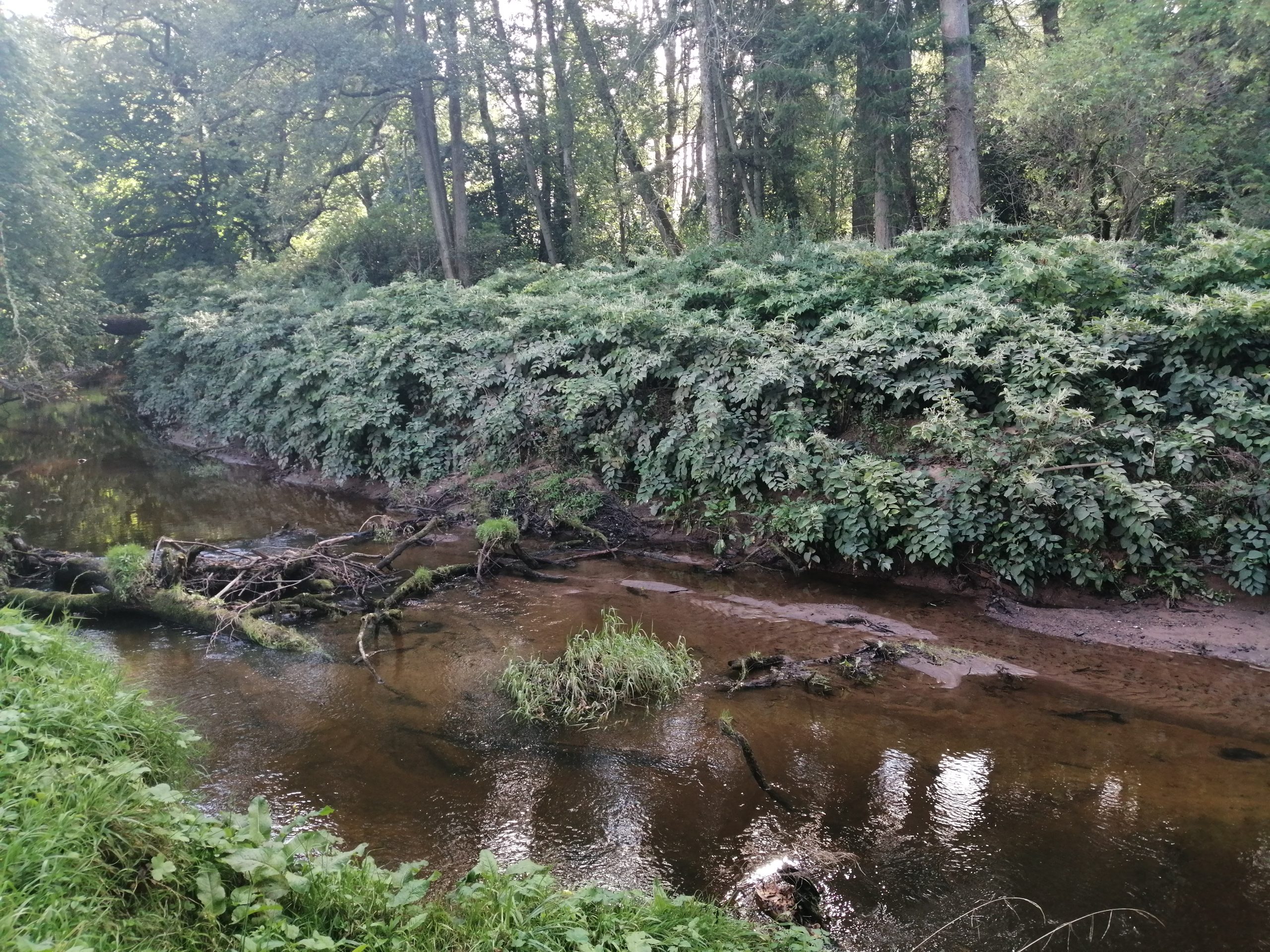
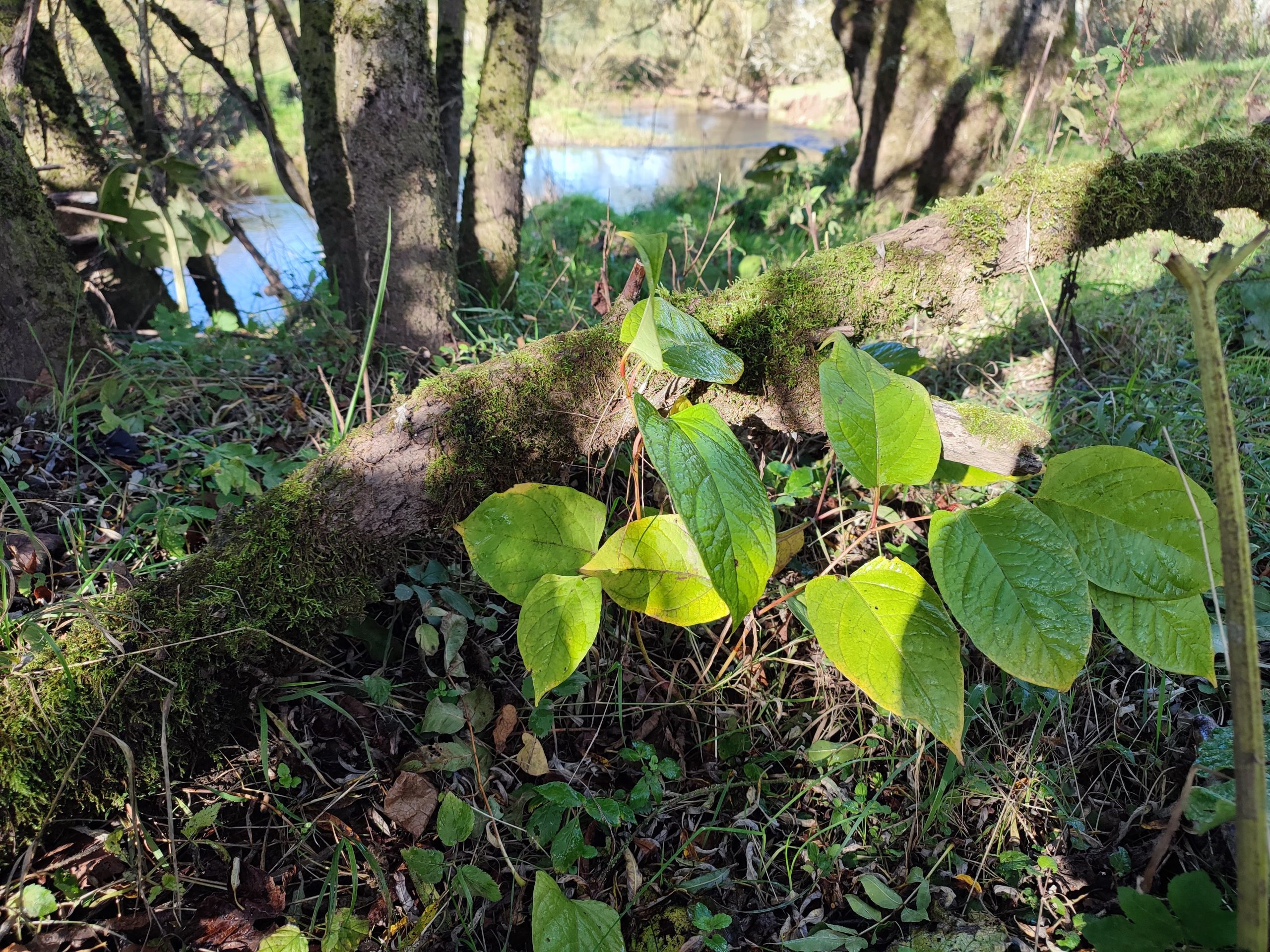
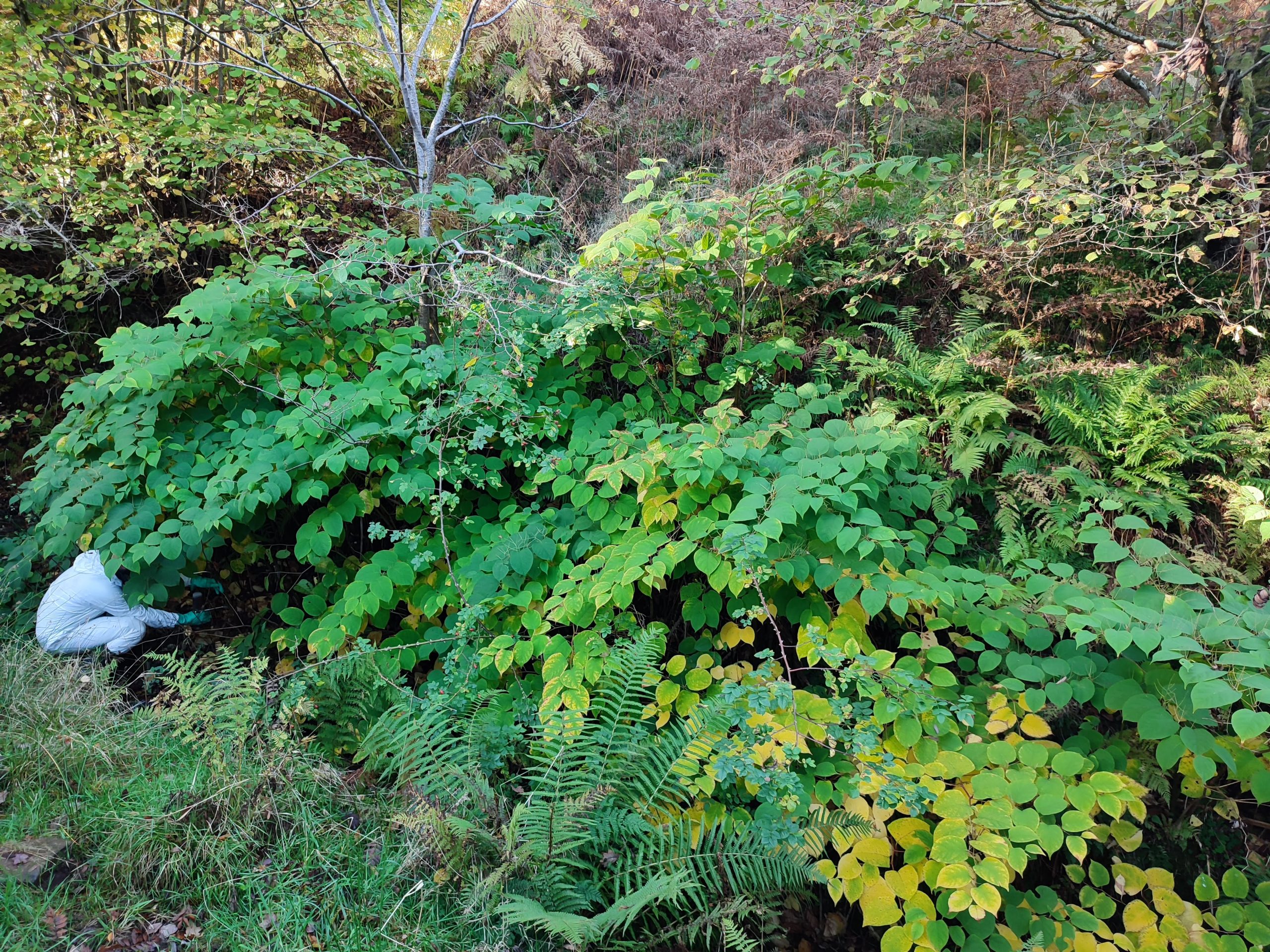
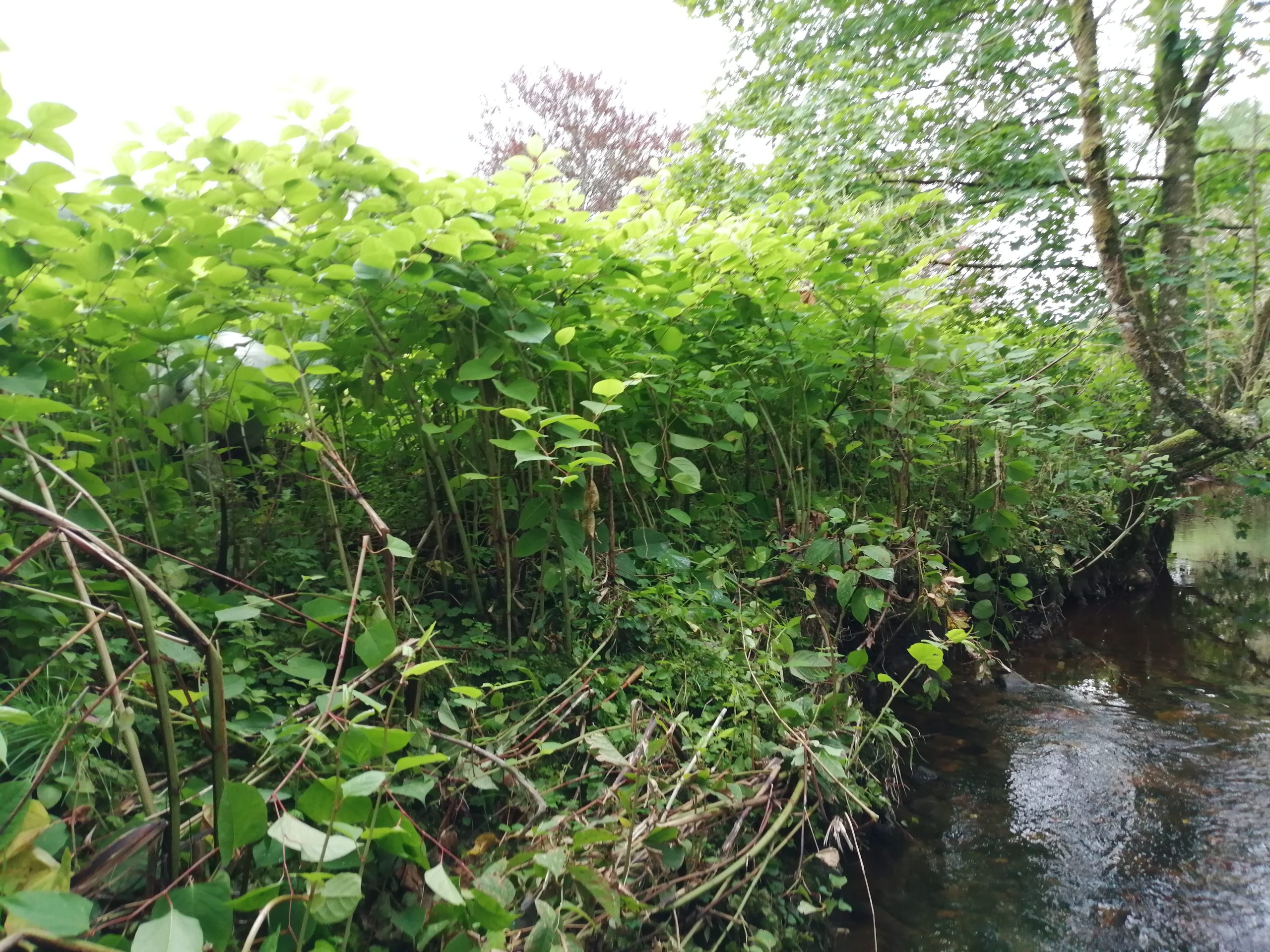
Himalayan Balsam
Impatiens glandulifera
Himalayan balsam can be found almost anywhere you look, recognizable from its hollow stems, pink flowers and explosive seed capsules. The shallow roots do not require much soil, and will grow new shoots quickly when disturbed. It might be the easiest to remove but it is the most invasive and is the most labour intensive. The Trust has run “balsam bashing” events in Fintry and Strathblane – targeting balsam at the top of the watercourses to prevent seed dispersal downstream. In partnership with West Dunbartonshire Council, the Trust has also been removing balsam on the Leven and Clyde estuary to boost biodiversity in nature reserves.
In 2021, we collaborated with the Centre for Agriculture and Bioscience International (CABI) on a trial control of balsam, which involved the controlled release of a rust fungus – glanduliferae. This infects the plant throughout the growing season, but unfortunately there was little evidence of inoculation over winter and another release was made in 2022. CABI are currently analysing our data collected in 2023 and we hope to be able to provide a positive update in due course. This trial was possible due to the kind sponsorship of local landowner James Pirrie.
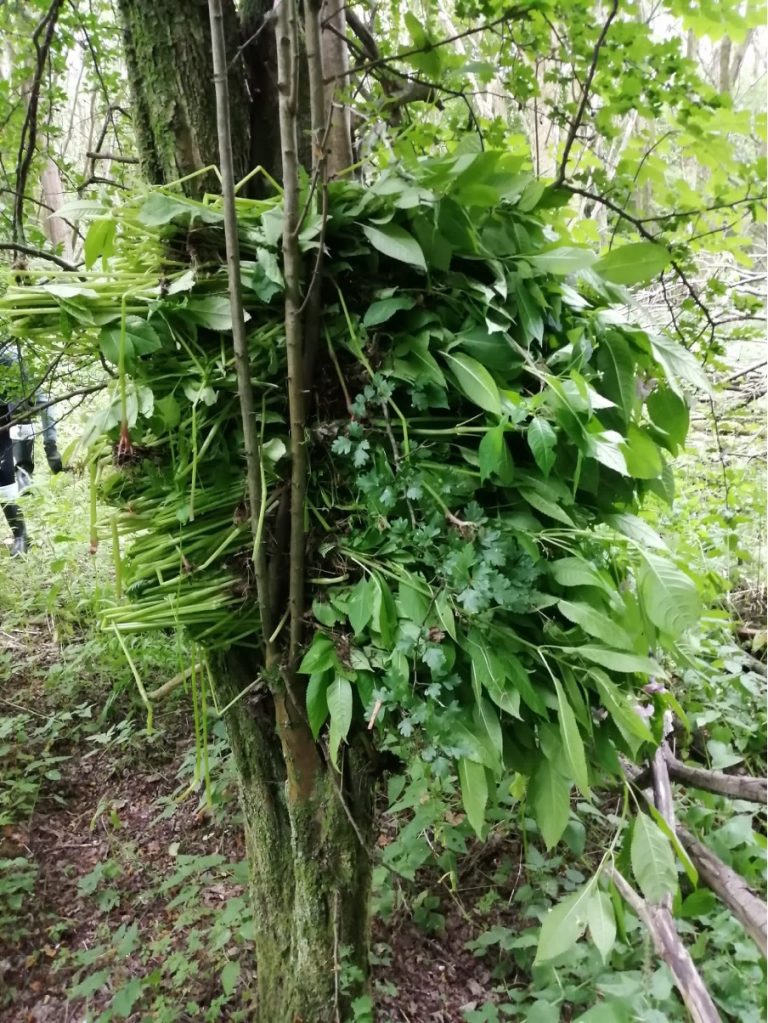
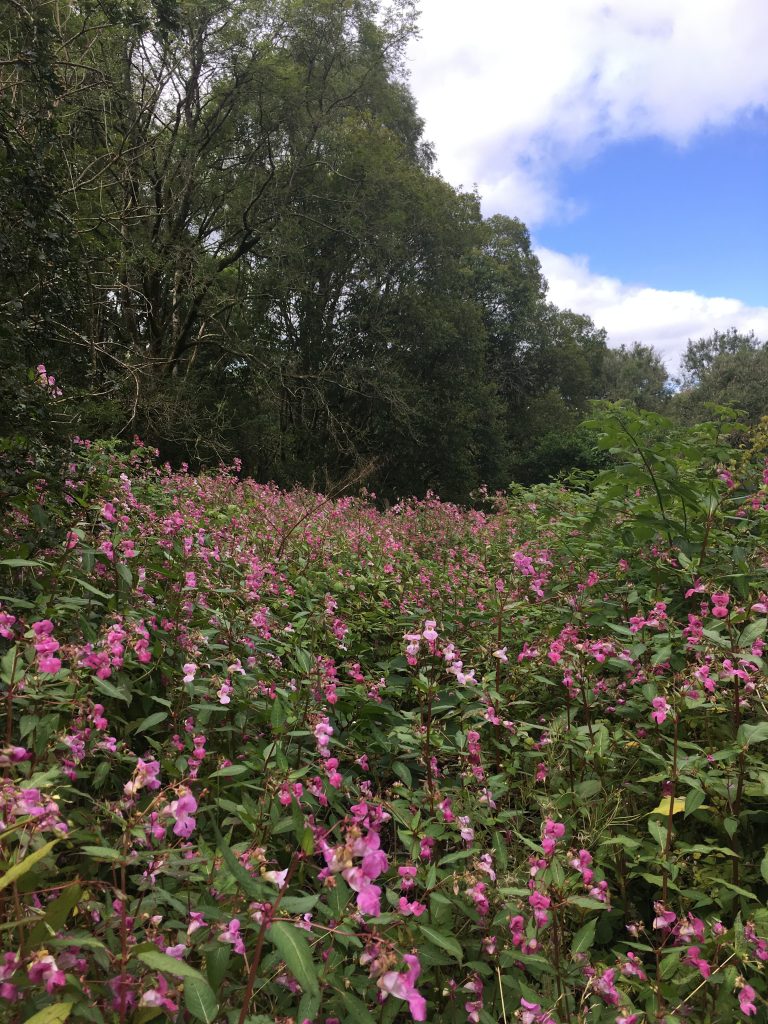
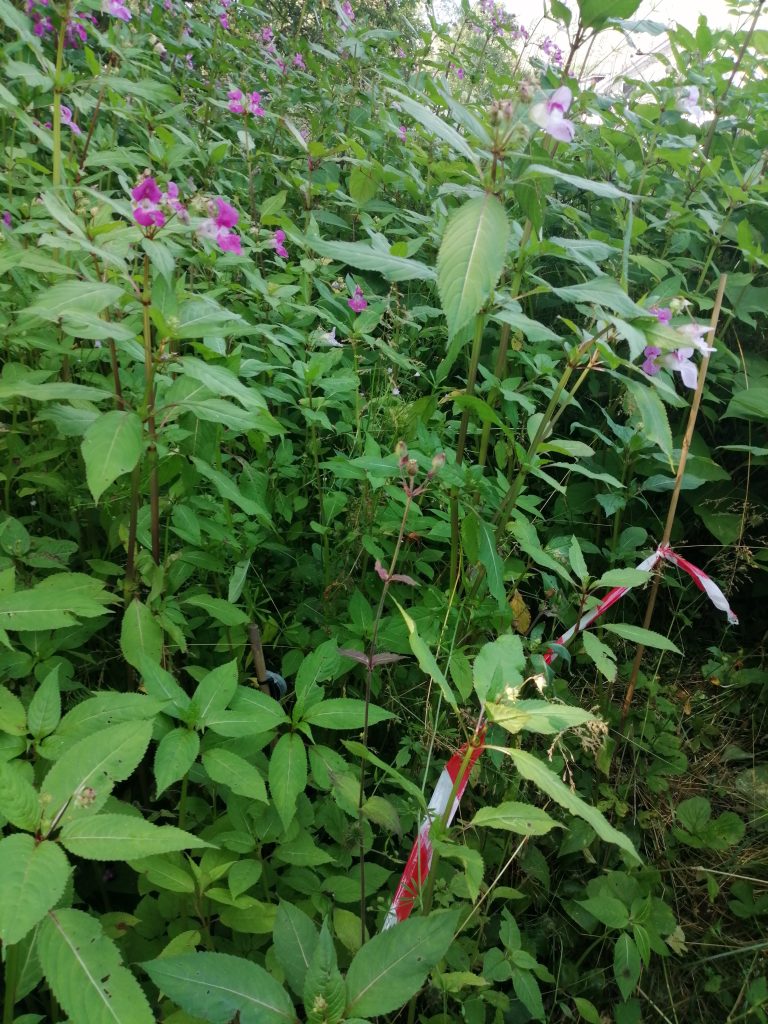
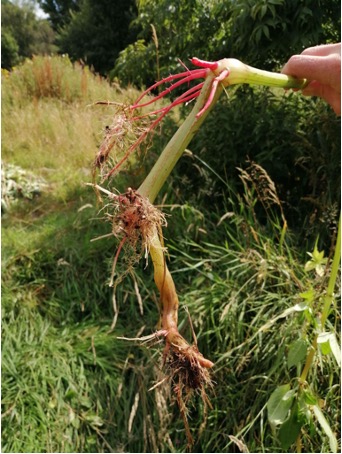
American skunk cabbage
Lysichiton americanus
American skunk cabbage is a relatively new invasive plant to the catchment but numbers have significantly increased due to the spread from private gardens within the past few years. A yellow flowering plant with large waxy and leather-like leaves, this plant prefers damp and boggy ground such as along river banks and around ponds. The easiest way to identify this plant is by finding the yellow flower hood, which first appears around March and April. However, It will generally take a few years before plants start producing flowers and seeds – therefore it is best to look for its large waxy leaves which are obvious at all life stages of the plant.
The seeds are contained in a fruit capsule called a spadix, which appears yellow at first but matures to a green colouration. A huge amount of seeds can be produced from each spadix, which can lie dormant in the soil and remain viable for up to up to 8/9 years. It is spread by rhizome and by seed dispersal, and can be transported via water courses, birds, and mammals. The leaves can reach a staggering 1.5m forming dense colonies in marsh areas and outcompeting vulnerable native wetland plant species. In partnership with West Dunbartonshire Council and their amazing volunteers, the Trust has been working on a dense plantation of this species at Balloch Country Park.




